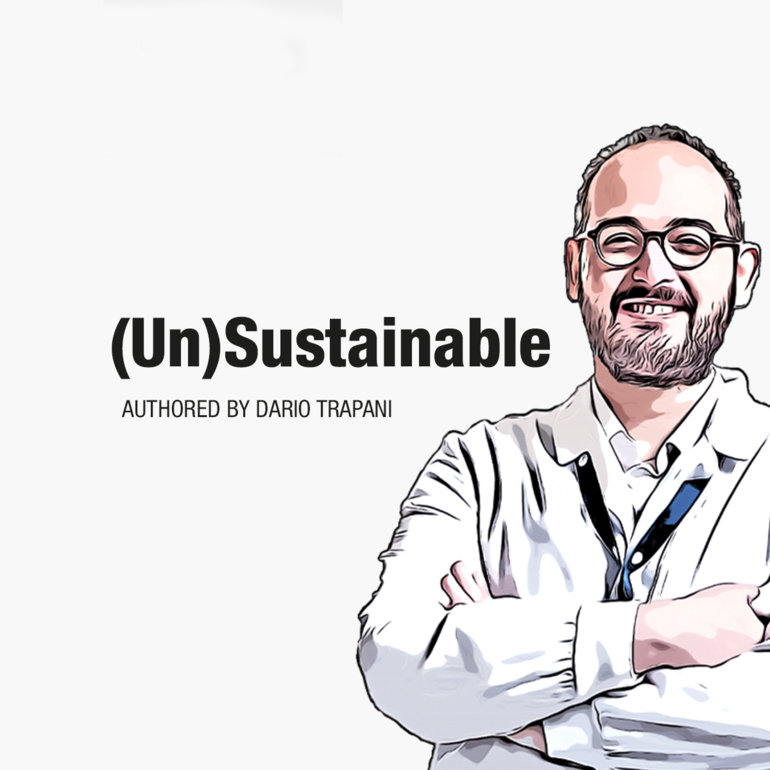Research shows that widespread use of artificial intelligence tools is associated with high demand for energy, water and minerals
We are living in the golden era of artificial intelligence (AI), that has significantly transformed and reduced the time needed for numerous processes, from simple internet searches to the analysis of large datasets, often without the need for human assistance. The revolution has not omitted oncology, where AI models are used to support cancer diagnosis, treatment decisions, drug discovery, analysing large amounts of data collected in clinical trials or routine practice. However, like all technologies, also AI comes at a cost for the environment.
Data centres, i.e., facilities with the necessary infrastructure to store large quantities of data, have existed for many years, and they are well-known to be avid consumers of electricity. However, with the rapid growth of AI, especially generative AI, the demand for large storage capacity and high-performance hardware has significantly increased. Since 2022, the electricity consumption of data centres has been steadily rising, and is expected to more than double by 2030, surpassing 1000 terawatt-hours (Nature. 2025 Apr 10. doi: 10.1038/d41586-025-01113-z). As highlighted by the Massachusetts Institute of Technology, if data centres were a country, they would rank among the top five electricity consumers in the world, comparable to Japan. AI-related consumption is estimated to account for around 20% of the total data centre energy use, but these numbers are likely to grow in the coming years partially due to generative AI: according to the Electric Power Research Institute, a simple single query like asking ChatGPT to correct or summarise an email, consumes about five to ten times more electricity than one web search.
The environmental impact related to energy consumption also comes from early development phases of AI models. For example, research suggests that training just one AI model, like OpenAI’s GPT-3, used the equivalent of the annual electricity consumption of over 120 homes in the US (arXiv:2104.10350). While users and their needs increase, the half-life of each model becomes shorter thus requiring further training and data to adjust its performance, with extra energy consumption. Moreover, high energy consumption is associated with the complexity of the tasks performed by AI models. As AI becomes widely available, an increase of energy consumption from each new user is expected.
The environmental impact is not only related to electricity. Large amounts of water are used in data centres to cool the hardware involved in training and maintaining models. It has been estimated that for each kilowatt-hour of energy consumed by a data centre, 2 litres of water are required for cooling. It is projected that the global water demand resulting from AI could reach over 6 billion cubic meters in 2027, which is more than half of the annual water use in the UK (arXiv:2304.03271).
AI’s environmental impact is even broader because the demand for natural resources, minerals, and rare earth elements used in hardware production grows in parallel with computational needs, leading to environmental damage such as water and air pollution, biodiversity loss, and greenhouse gas emissions (United Nations Environment Programme 2024).
AI-based tools are extensively studied and implemented in oncology, especially in the area of radiological and histological diagnosis. AI tools can potentially improve cancer screening and diagnosis when applied to radiology images, and help identify prognostic factors and risks of disease recurrence by analysing histology slides or other patient data. Moreover, various tools and applications are used for patient records for research purposes or to foster enrollment in clinical trials. An appropriate use of AI-based systems is expected to improve cancer care and patient outcomes, but this will come with inevitable environmental costs, as described above. On the other hand, the environmental impact of AI-driven oncology could be mitigated by an optimisation of cancer care supported by the technology, including a reduction of access to healthcare services or patient travels, earlier cancer detection and more effective cancer prevention.
Hopefully, AI will also have a positive environmental side. Some studies show that, if used wisely, AI could help reduce even more than 10% of greenhouse gas emissions by 2035 (Npj Clim Action 4, 56;2025). In medicine and oncology, digital or AI-based tools that improve diagnostic and therapeutic processes can help lower the demand on healthcare and decrease the healthcare system's carbon footprint.
The United Nations Environment Programme emphasises that AI offers transformative opportunities for some target areas such as climate action, nature protection, and pollution prevention. However, more data are needed to reliably quantify the impact of digital tools and AI on the environment, and to maximise benefits while minimising costs.
Even though most of the environmental impact of AI comes from building and training the models, each of us can help reducing it. By avoiding using AI for simple tasks, like searching for information, writing emails, patient letters or conference abstracts, we all can contribute to building a more sustainable world, where AI tools help us to achieve better cancer care with lower environmental costs.
AI & Digital Oncology: Resources in one place
Looking for further insights into how artificial intelligence and digital tools are impacting oncology? The ESMO AI & Digital Oncology Hub brings together expert perspectives, research updates, and thought leadership from across oncology.
It is a space where you can stay informed, discover resources, and follow the conversation on digital innovation in cancer research and treatment.
To further explore the transformative potential of AI in oncology, the very first ESMO AI and Digital Oncology Congress 2025, taking place from 12 to 14 November, will provide a dedicated platform focused on the latest advances in AI and digital technologies in cancer care.





